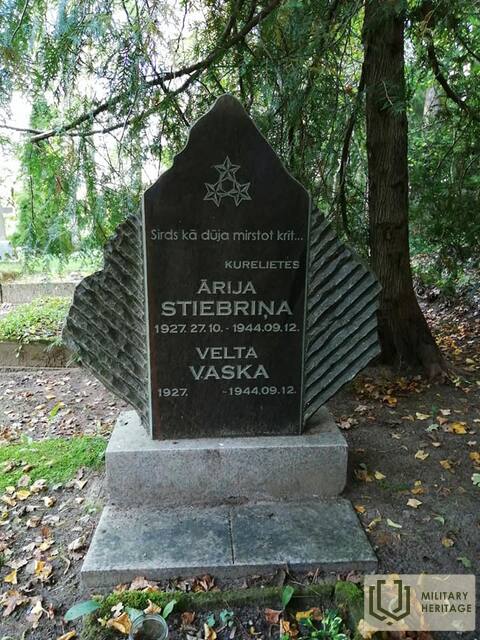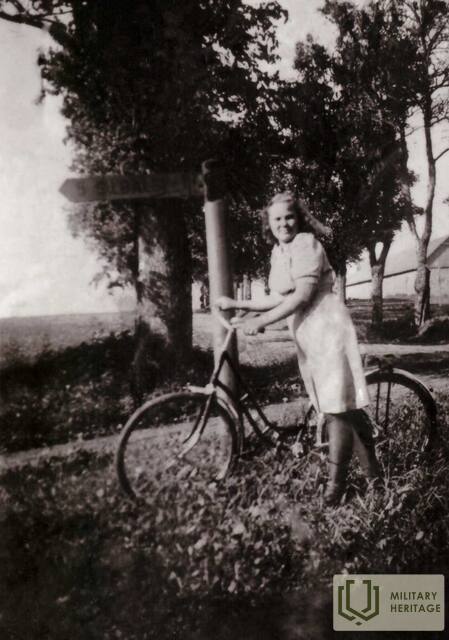Monument to the Rubenis Battalion Medics
Memorial site


 160
160



Monument at the Cirkale cemetery to the priests Ārija Stiebriņa and Velta Vaska, who were shot by the Germans on November 9, 1944. Created by sculptor J. Karlovs.
The two women were shot by units of the German Nazi army on December 9, 1944, along with other captured residents of the Zlēki area, deserters from the German army, or the like.
According to the stories, the young women joined the Rubenis battalion voluntarily. They traveled with the Rubenis battalion from Suntaži to Usma. However, during Jekeln's "Eichensumpf" operation, the young women were arrested on the road, taken to the Vēlogi forester's house for interrogation and shot together with a small group of other detainees. A woman, a resident of Cirkale, knew Ārija and managed to rebury the remains of both girls at the edge of the Cirkale cemetery and maintained this cemetery throughout the Soviet occupation.
Under the leadership of the Supreme SS and Police Leader in Ostland, SS Obergruppenführer and Police General Friedrich Jeckeln, a large-scale operation, Eichensumpf ("Oak Swamp"), took place from December 5 to 9, which was directed against the Red Arrow fighters and General Kurel's group near Abava.
The course of the campaign is partially documented in a report dated December 31, 1944.
Used sources and references:
https://lv.wikipedia.org/wiki/Fr%C4%ABdrihs_Jekelns
https://www.diena.lv/raksts/pasaule/krievija/karatavas-rigas-laukuma-13279589
Related timeline
Related stories
The place of the Zlēki tragedy in Latvian history is still unclear
During the Second World War, when most of Latvia was already controlled by the Soviet Union and Kurzeme was ruled by Hitler's German viceroys, the so-called Kurelians in Kurzeme started the struggle for the restoration of Latvia's state independence.







